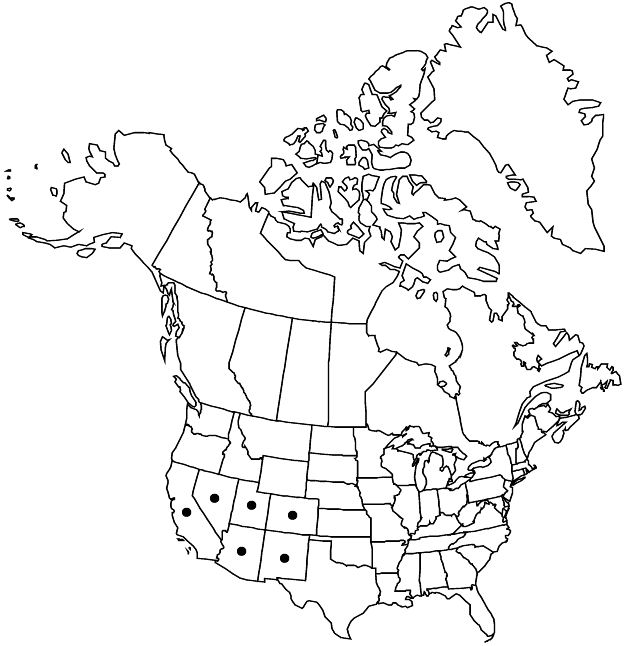Difference between revisions of "Sphaeralcea parvifolia"
Proc. Biol. Soc. Wash. 17: 94. 1904.
FNA>Volume Importer |
imported>Volume Importer |
||
| (One intermediate revision by the same user not shown) | |||
| Line 58: | Line 58: | ||
|publication year=1904 | |publication year=1904 | ||
|special status=Endemic | |special status=Endemic | ||
| − | |source xml=https:// | + | |source xml=https://bitbucket.org/aafc-mbb/fna-data-curation/src/2e0870ddd59836b60bcf96646a41e87ea5a5943a/coarse_grained_fna_xml/V6/V6_677.xml |
|subfamily=Malvaceae subfam. Malvoideae | |subfamily=Malvaceae subfam. Malvoideae | ||
|genus=Sphaeralcea | |genus=Sphaeralcea | ||
Latest revision as of 22:23, 5 November 2020
Plants perennial. Stems erect, green or gray-green, 1.5–4(–10) dm, white- to yellow-canescent. Leaf blades gray to green, ovate, unlobed or weakly 3–5-lobed, 1–5.5 cm, not rugose, base cuneate to cordate, margins entire or crenate to serrate, surfaces stellate-pubescent. Inflorescences paniculate, crowded, flowers clustered with distinct internodes between clusters, tip not leafy; involucellar bractlets usually green to tan, sometimes red-purple. Flowers: sepals 6–9 mm, tip not forming distinct beak in bud; petals red-orange, 8–14 mm; anthers yellow. Schizocarps ellipsoid; mericarps 12, 3.5–5.5 × 1.5–3 mm, chartaceous, nonreticulate dehiscent part 60–70% of height, with or without apical cusp, indehiscent part not wider than dehiscent part. Seeds 1 per mericarp, gray or black, ± pubescent. 2n = 10, 20.
Phenology: Flowering summer.
Habitat: Dry slopes
Elevation: 1500–2100 m
Distribution

Ariz., Calif., Colo., Nev., N.Mex., Utah.
Discussion
Selected References
None.